Mass Deaths of Grey-Headed Flying Foxes in Australia Due to Extreme Heat May Be Prevented by Advanced Water Spraying System.
Every evening, tens of thousands of grey-headed flying foxes take to the skies over Melbourne, Australia.
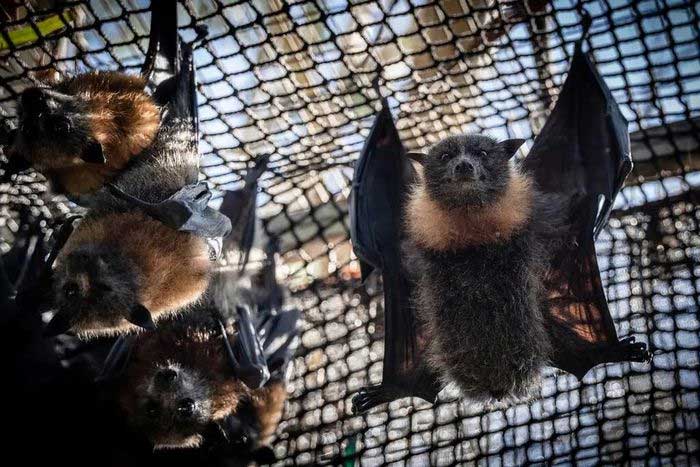
Grey-headed flying foxes at a release facility in Yarra Bend Park, Melbourne, Australia. (Photo: New York Times).
During the day, these large bats gather in the tree canopies. At night, they spread across Victoria in search of food: flowers, leaves, and fruit.
However, summer threatens their existence. Temperatures rise too high, above 40 degrees Celsius, leading to mass deaths among the bats. Such sweltering days are becoming increasingly frequent.
The period from 2013 to 2020 was one of the ten hottest periods recorded in Australia. Authorities in Melbourne, a city once known as Batmania (“City of Bat Enthusiasts”), devised a solution: bathing these bats.
This year, at a cost of approximately $120,000, 32 water spraying systems have been installed along the river in Yarra Bend Park, Melbourne’s largest natural forest park, which is home to around 35,000 bats this summer.
Designing the system faced many complex issues, he shared. In addition to concerns about noise, durability, and supply, the system needed protection from the beaks of parrots that enjoy pulling things apart.
Initially, technicians struggled to create a light drizzle to cool the bat colony without excessively increasing humidity, which could have adverse effects. Eventually, a system resembling tall metal reeds was developed.
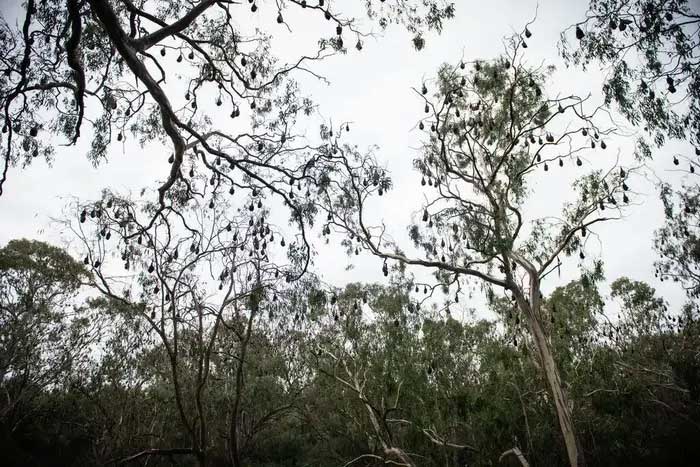
A colony of grey-headed flying foxes in Yarra Bend Park. (Photo: New York Times).
Will the Bats Use Them?
“They are smarter than we think,” Sullivan said. He noted that during testing, one bat boldly flew through the water spray before returning to the colony and chirping excitedly. Almost immediately, it seemed to send a signal, and another bat flew in, followed by more and more.
“As a result, many bats flew through,” Sullivan said. “It was as if they were telling each other, ‘Come here and check this out’.”
Rodney van der Ree, an ecologist at the University of Melbourne, stated that grey-headed flying foxes are very cooperative.
“They are very intelligent,” he said. “A certain number of individuals will show up in a new area if there is a large food supply available, as they somehow communicate with each other.”
In December 2019, about 4,500 grey-headed flying foxes died in Australia within just three days of extreme heat.
During the hottest days, the usual methods bats use to cope with heat, such as sweating or fanning their wings, become ineffective. As their bodies dehydrate, neurological function declines, causing some animals to start convulsing. Without urgent care, they will die.
Volunteers feel heartbroken when witnessing life leaving these creatures.
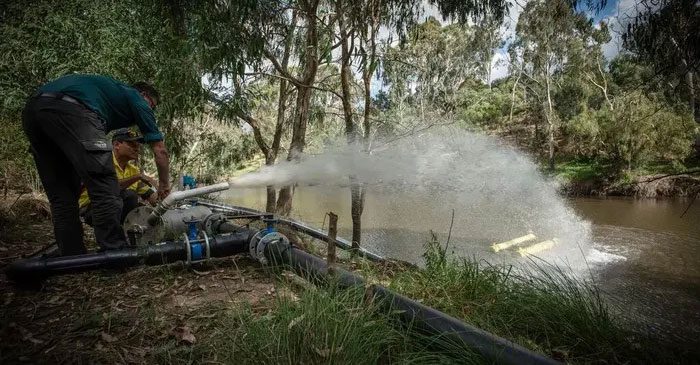
Sullivan and Tim Carver, head of a Parks Victoria ranger team, test the new water spraying system. (Photo: New York Times).
“You will feel disheartened, but you have to pick yourself up and keep acting, because that’s the only thing you can do,” said Lawrence Pope, 62, who has lived alongside the Melbourne bats for two decades. He added, “If we don’t help them, no one will.”
For many Australians, these animals are quite smelly, noisy, and potentially disease-carrying.
However, for ecologists, the declining number of bats, down to about 700,000 in 2019 from millions previously, is very concerning. Bats are a “keystone” species, playing an essential role in pollinating many native plants.
Pope, along with his wife, Megan Davidson, has rescued and cared for many stray bats until they are large enough to return to their colonies.
Pope stated that grey-headed flying foxes face many dangers if they continue to remain in the city, such as barbed wire, nets in trees, and power lines. He hopes the water spraying systems will save “a large number of them” from the extreme heat.
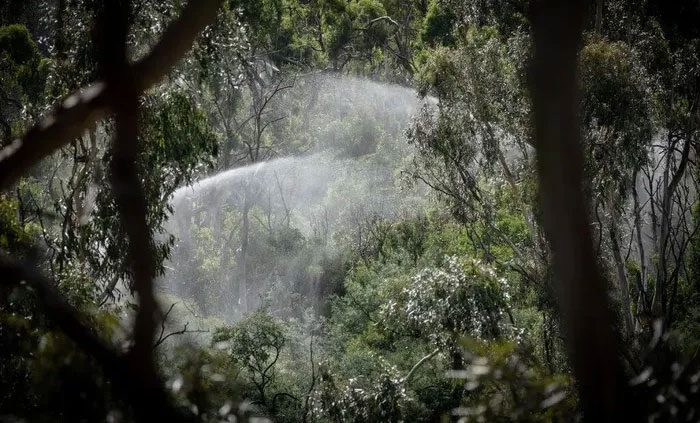
The water spraying system is designed to simulate a light rain without excessively increasing humidity. (Photo: New York Times).
Origins of the Bat Colony
The grey-headed flying fox is native to Australia, but they were relocated to Melbourne from other areas several decades ago due to habitat destruction.
Simon Toop, then project director for the Department of Environment and Sustainability, said that when the bats first appeared in the Melbourne Botanical Gardens in the 1990s, they created a novel impression for visiting tourists.
However, as the bat population increased and their presence began to cause annoyance, they were deemed pests, he added.
Unable to kill the bats—an endangered species that needs protection—the local government launched an ambitious campaign to drive the bats away from the Botanical Gardens.
A group of people, led by Toop, harassed the bats by creating sounds that the animals disliked, such as street cleaning noises, and shining lights at them.
After two weeks of disturbance, the bats left the Botanical Gardens. Over the next eight months, they moved from this prime area to another ideal location, through tidy backyards, a private girls’ school, to the backyards of wealthy Melburnians.
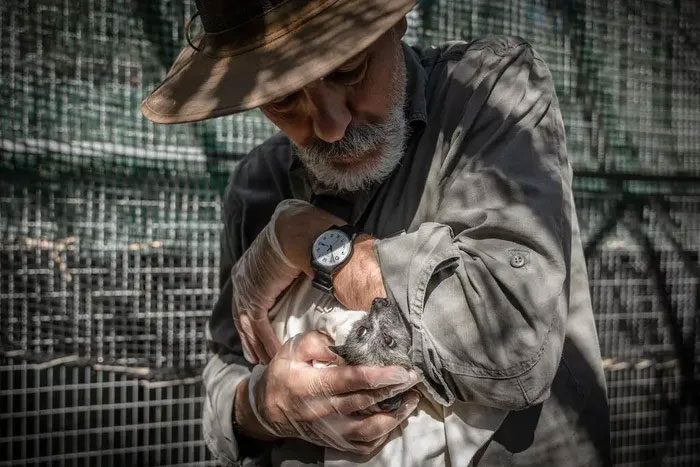
Pope stated: “If you don’t help them, no one will.” (Photo: New York Times).
Wherever they went, Toop’s team would appear. In fact, the grey-headed flying foxes seemed to recognize them, he said.
“They will recognize me, screech and make noise,” Toop said. “Whereas if others pass by, they don’t seem too worried.”
Eventually, the bat colony moved to their current location along the river, where authorities hope they will settle. Toop noted that the female bats were about to give birth at that time, so local officials improved their habitat to meet their needs.
Two decades later, the water spraying system is the latest effort to support the bat colony. However, water will only be sprayed when there is a real risk—especially as the number of extreme heat days continues to rise.
Dr. Van der Ree, the ecologist, noted that in the context of global warming, bats will need to adapt to current conditions.
“Challenges are necessary from an evolutionary standpoint. Ideally, the bats can regulate their body heat to continue surviving and pass on those genes, developing more than those that cannot,” he said.


















































